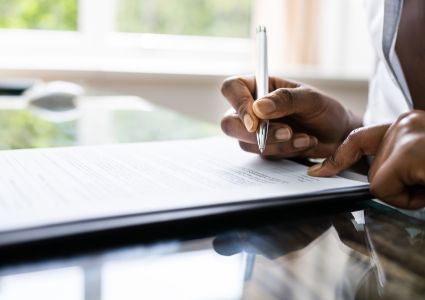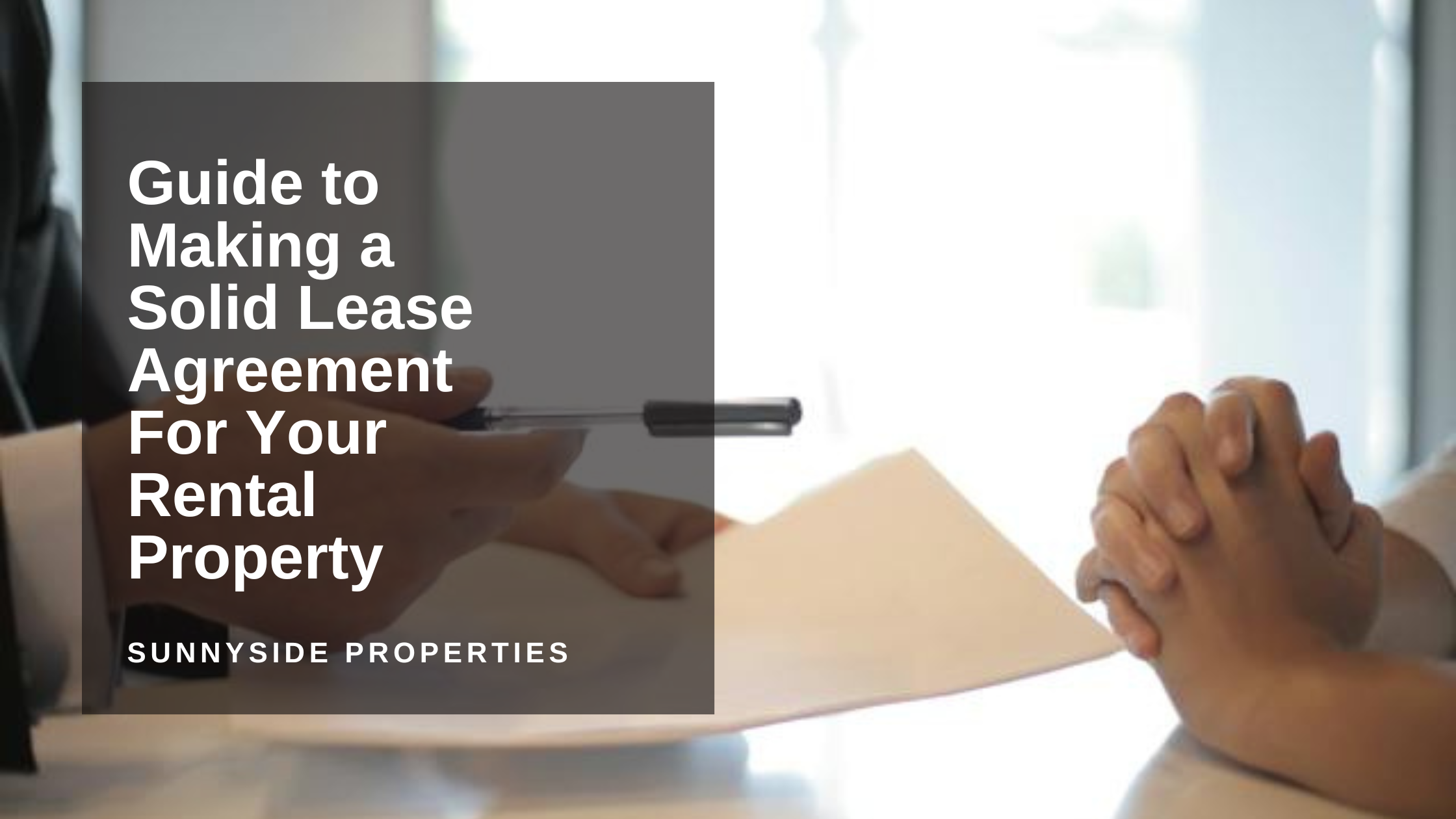As a landlord, creating a comprehensive and enforceable lease agreement is one of the most critical steps in managing your rental property. A lease agreement establishes the legal foundation for the landlord-tenant relationship and serves as a binding contract that outlines the rights and responsibilities of both parties.
At SunnySide Properties, we understand the importance of crafting a lease agreement that protects your investment while fostering a positive relationship with your tenants. Here is a guide to help you create a robust lease agreement for your rental property.
1. Understand Legal Requirements
Before drafting a lease agreement, it is essential to familiarize yourself with local, state, and federal laws governing landlord-tenant relationships. These regulations dictate key elements that must be included in the lease, such as security deposit limits, notice periods for termination, and disclosures about the property.
Failure to adhere to these laws can lead to legal disputes, fines, or even invalidation of the lease. For example, some jurisdictions require landlords to disclose how security deposits will be handled. The deposit may need to be held in a separate account, and interest may need to be paid to the tenant.
Consulting a property management professional like SunnySide Properties can help you navigate these legal requirements and create a lease agreement that adheres to all relevant regulations.

2. Define the Rental Terms Clearly
The lease agreement should provide detailed information about the rental property and the terms of tenancy. Start by including the full names of all tenants and landlords involved in the agreement.
Listing all tenants ensures they are legally bound by the lease terms, which can simplify accountability for issues like unpaid rent or property damage. Include contact information for both parties to facilitate clear communication throughout the lease period.
Next, specify the property’s address and any included features or amenities, such as parking spaces, storage units, or access to communal facilities. Be as detailed as possible to prevent disputes over what is or isn’t part of the rental agreement.
Clearly state the lease term—whether it is a fixed-term lease with specific start and end dates or a month-to-month agreement that renews automatically until terminated by either party.
3. Outline Rent and Payment Policies
Rent is the cornerstone of the landlord-tenant relationship, so it’s crucial to include comprehensive details about payment expectations. Specify the exact monthly rent amount, the due date, and the preferred payment methods.
For instance, you might allow tenants to pay via online portals, checks, or direct deposits. Providing multiple options can make it easier for tenants to stay current on their payments.

It’s also essential to include information about late fees and returned check fees. Clearly define these penalties in the lease agreement to avoid misunderstandings.
Additionally, outline the process for addressing payment disputes, such as partial payments or missed payments, to ensure both parties are aware of their rights and responsibilities.
4. Detail Maintenance and Repair Responsibilities
One of the most common sources of landlord-tenant disputes is confusion over maintenance responsibilities. To prevent such issues, the lease agreement should clearly define which party is responsible for specific maintenance tasks.
Landlords are typically responsible for maintaining the structural integrity of the property, ensuring plumbing and HVAC systems function properly, and addressing pest infestations. Tenants, on the other hand, are generally responsible for keeping the property clean, disposing of trash properly, and promptly reporting maintenance issues.
If your lease includes provisions for tenant responsibilities, such as lawn care or replacing lightbulbs, these should be explicitly stated. Additionally, include details about how tenants should report maintenance issues and the expected timeline for addressing them.
This level of detail can help ensure that the property remains in good condition while minimizing misunderstandings between landlords and tenants.
5. Establish Rules and Policies
Every rental property comes with rules and policies that tenants must follow to maintain a harmonious living environment. Use the lease agreement to outline these rules clearly.
Common policies include pet restrictions, smoking prohibitions, and noise level expectations. For example, if pets are allowed, specify any breed restrictions, weight limits, or additional fees that apply.

Occupancy limits are another important consideration. Define the maximum number of occupants allowed in the rental unit and include provisions for overnight guests.
Additionally, outline rules regarding alterations to the property, such as painting walls or installing fixtures, and whether these require prior landlord approval. By setting clear expectations upfront, you can reduce the likelihood of disputes and ensure compliance with property regulations.
6. Address Security Deposits
Security deposits are a standard component of lease agreements and serve as a financial safeguard for landlords. Clearly outline the amount of the security deposit, the conditions under which deductions may be made, and the timeline for its return after the lease ends.
Many jurisdictions require landlords to return security deposits within a specific timeframe, such as 30 days after the lease ends. If deductions are made, landlords are often required to provide an itemized list to the tenant.
Specify how the deposit will be held—such as in an interest-bearing or non-interest-bearing account—and whether tenants will receive any interest accrued. Be sure to follow all legal requirements to avoid disputes or penalties related to the handling of security deposits.
7. Include a Clause for Lease Termination
Clearly define the conditions under which the lease can be terminated by either party. This includes:
Notice periods for ending the lease.
Penalties for breaking the lease early.
Circumstances under which the lease may be terminated without penalty.
This clarity ensures that both parties understand their rights and obligations, minimizing confusion and potential legal issues.

8. Add Provisions for Dispute Resolution
Disagreements can arise, even with a well-crafted lease agreement. Including a dispute resolution clause can help resolve conflicts efficiently. Options include requiring mediation or arbitration before legal action or specifying the jurisdiction for legal disputes. This proactive approach can save time and money for both parties.
9. Specify Access to the Property
Include a section that outlines when and why the landlord or property manager may access the rental unit. Typical reasons include repairs, inspections, or showing the unit to prospective tenants.
Many jurisdictions require landlords to provide advance notice, such as 24-48 hours, except in emergencies. Clearly defining these terms can help avoid misunderstandings.
Conclusion
Creating a solid lease agreement is a vital step in protecting your rental property and fostering a positive landlord-tenant relationship. By focusing on key elements such as legal compliance, clear rental terms, detailed maintenance responsibilities, and transparent policies, you can minimize risks and ensure a smooth tenancy.
At SunnySide Properties, we specialize in providing expert property management services, including the creation of comprehensive lease agreements tailored to your needs.
Whether you’re a experienced landlord or just starting out, our team is here to guide you through the complexities of property management. Reach out to SunnySide Properties today to learn how we can help you protect your investment and achieve long-term success in rental property ownership.


.png)